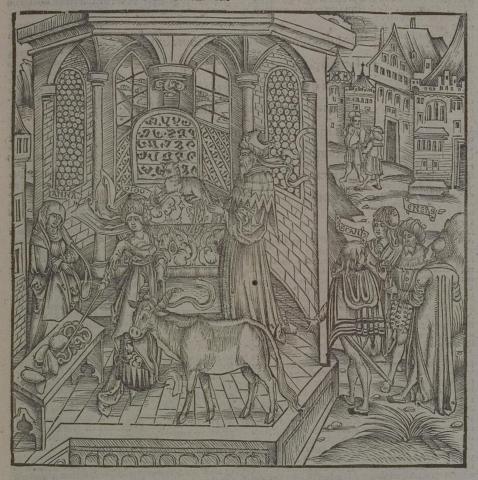Annotations
At Carthage, a priest wearing ceremonial ribbons, or fillets, on his head sacrifices a sheep on the altar (57-9). Dido, with her left hand, pours wine onto the head of a white heifer (60-1), while with her right hand, she points a stick at a set of disembodied entrails, reading them (63-4). Anna stands to the left of Dido, watching the sacrifice. On the right, Aeneas and Ascanius stand outside the temple with two others, a reminder of the reasons for Dido's sacrificing. (Katy Purington)
Woodcut illustration from the “Strasbourg Vergil,” edited by Sebastian Brant: Publii Virgilii Maronis Opera cum quinque vulgatis commentariis expolitissimisque figuris atque imaginibus nuper per Sebastianum Brant superadditis (Strasbourg: Johannis Grieninger, 1502), fol. 211r, executed by an anonymous engraver under the direction of Brant.


Sebastian Brant (1458–1521) was a humanist scholar of many competencies. Trained in classics and law at the University of Basel, Brant later lectured in jurisprudence there and practiced law in his native city of Strasbourg. While his satirical poem Das Narrenschiff won him considerable standing as a writer, his role in the transmission of Virgil to the Renaissance was at least as important. In 1502 he and Strasbourg printer Johannes Grüninger produced a major edition of Virgil’s works, along with Donatus’ Life and the commentaries of Servius, Landino, and Calderini, with more than two hundred woodcut illustrations. (Annabel Patterson)